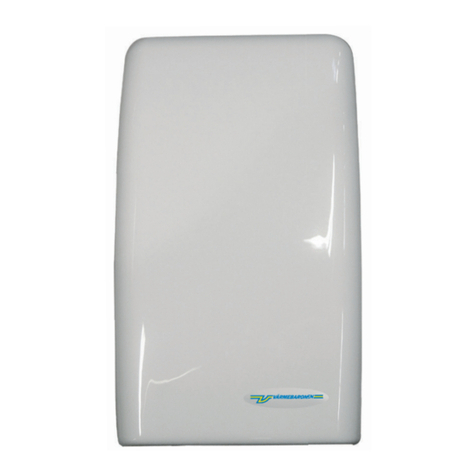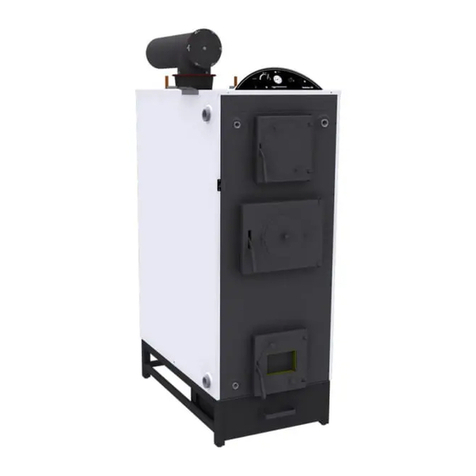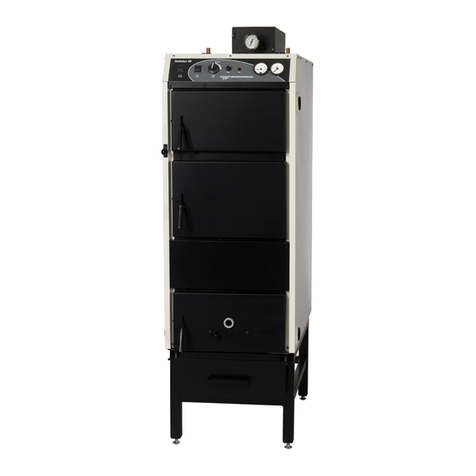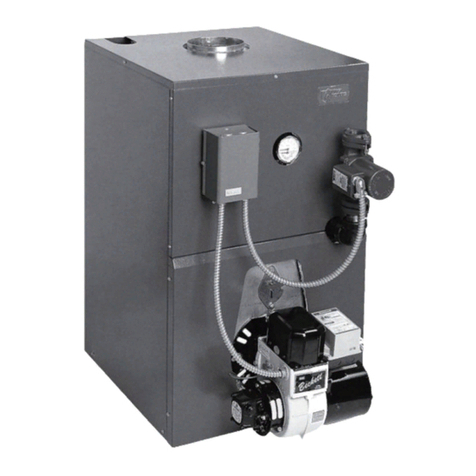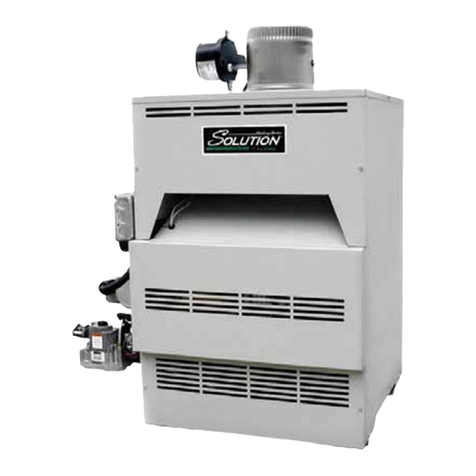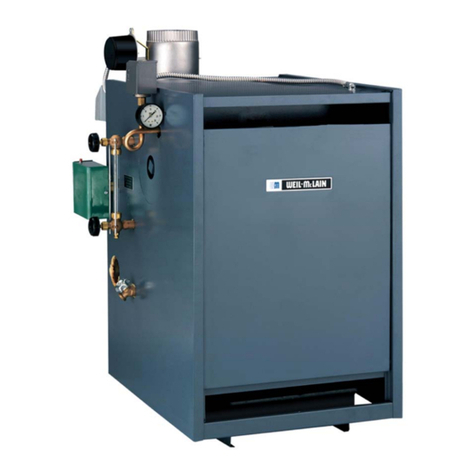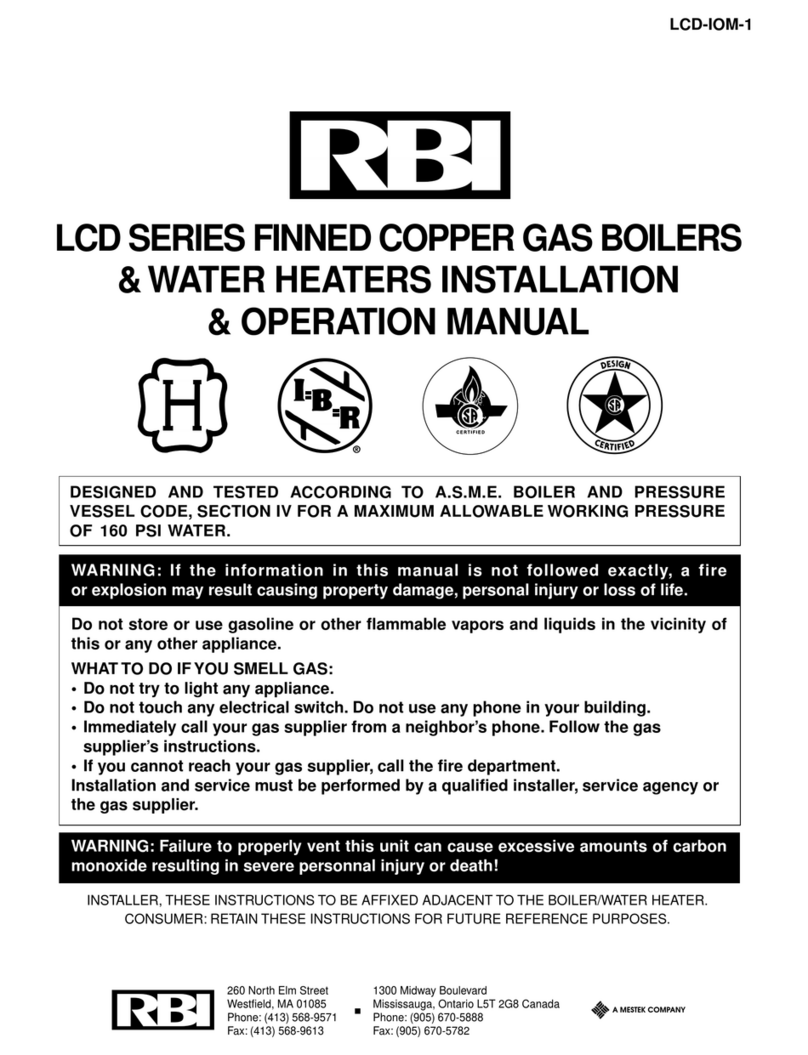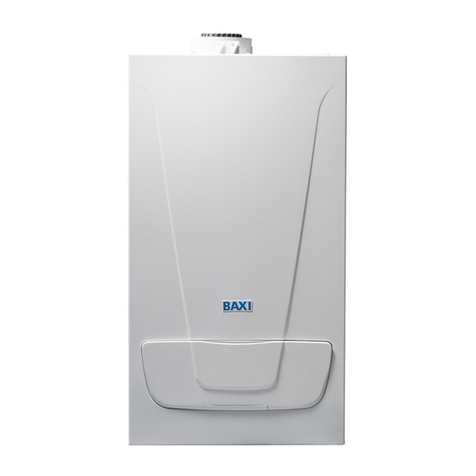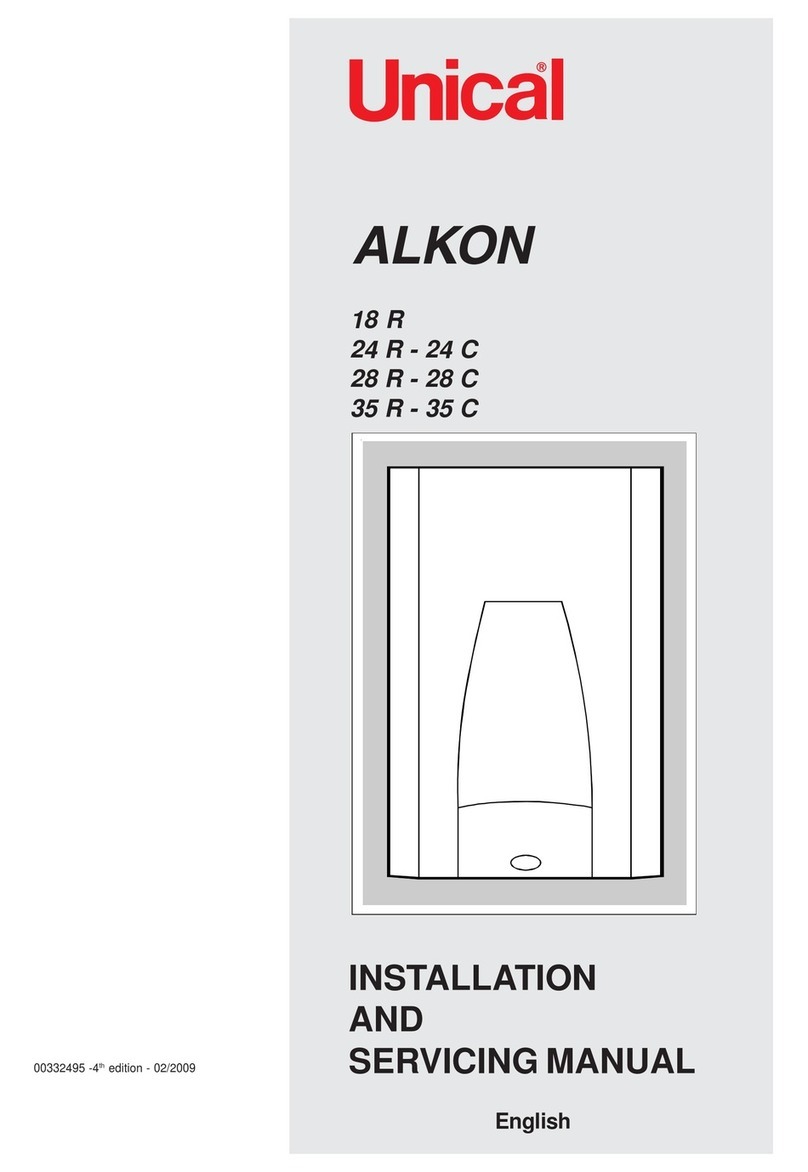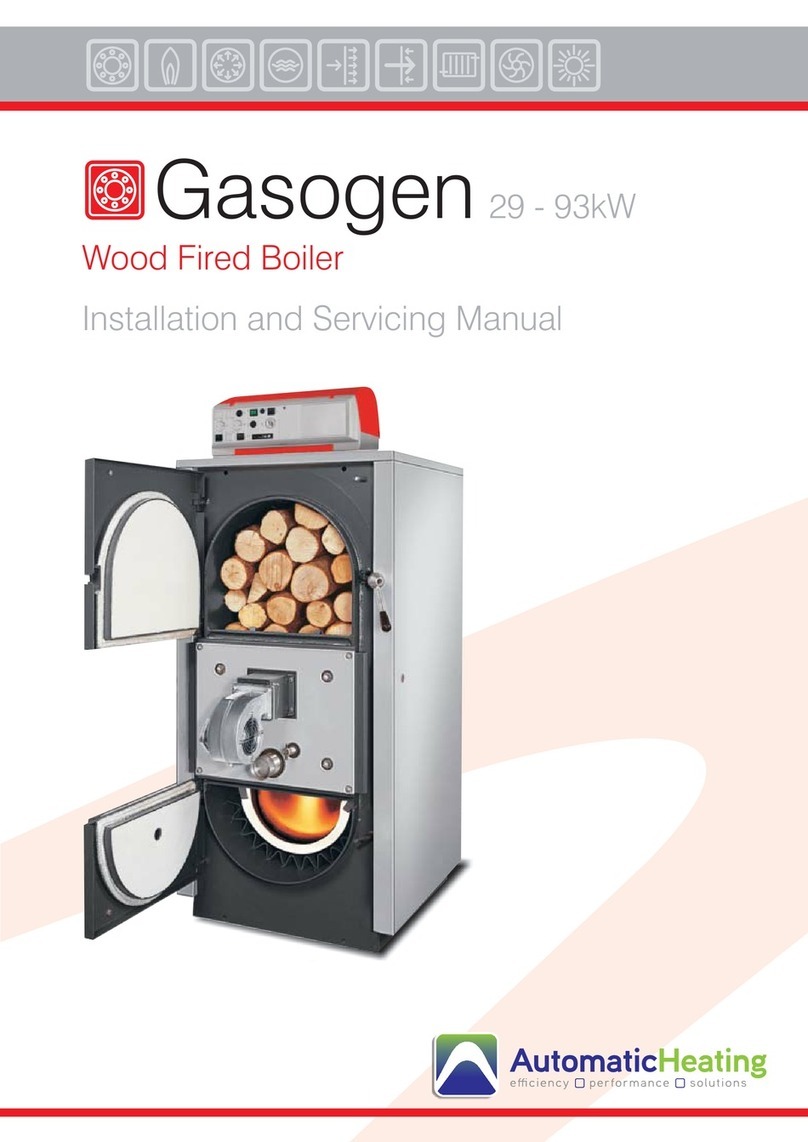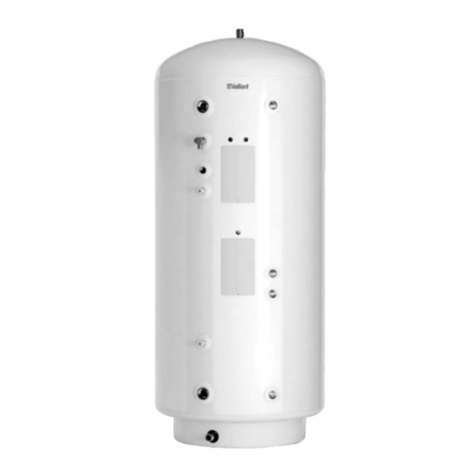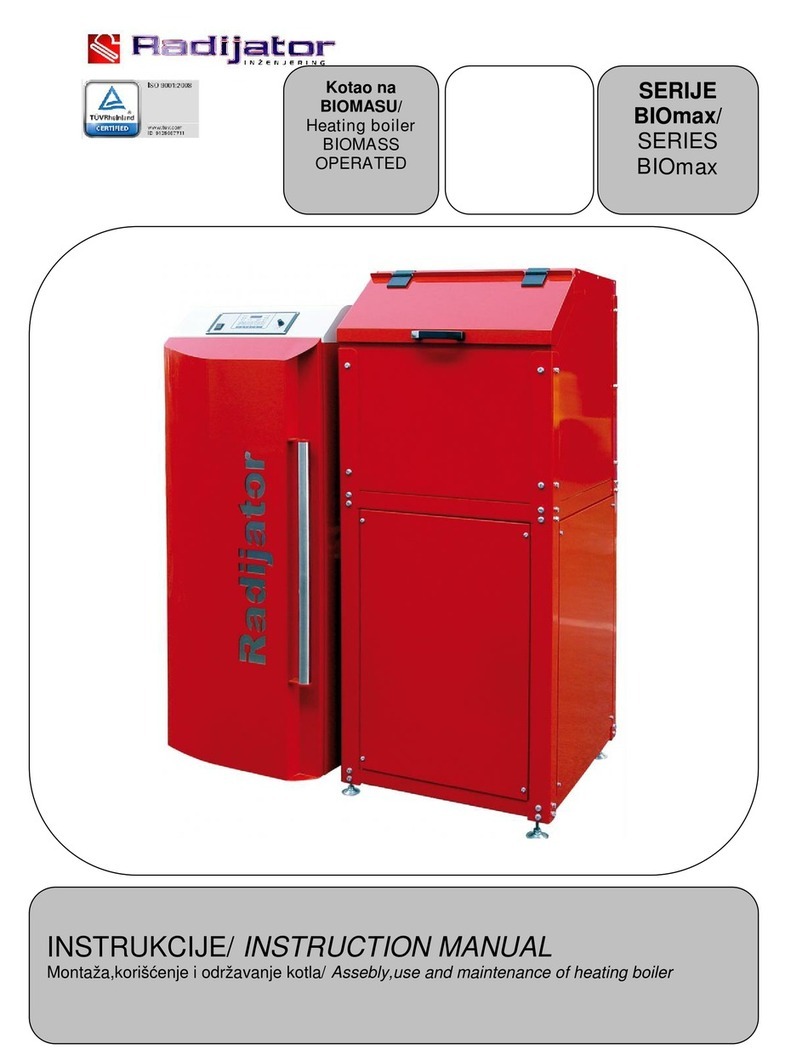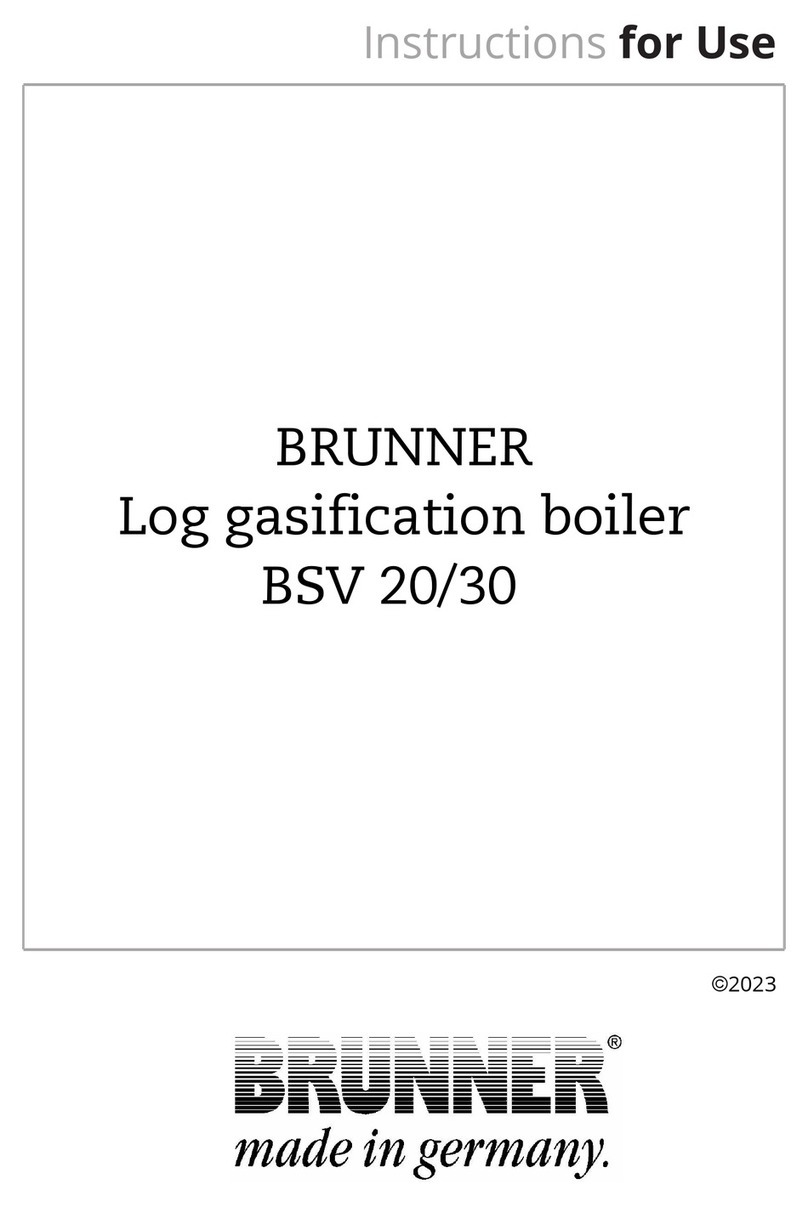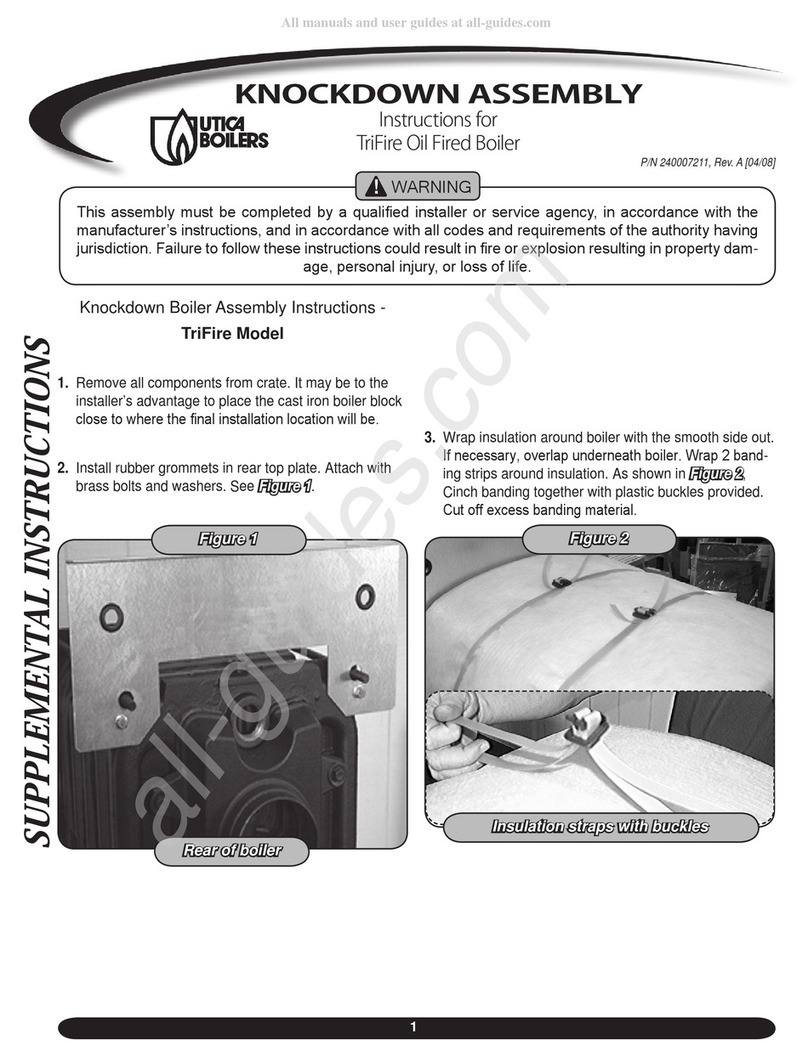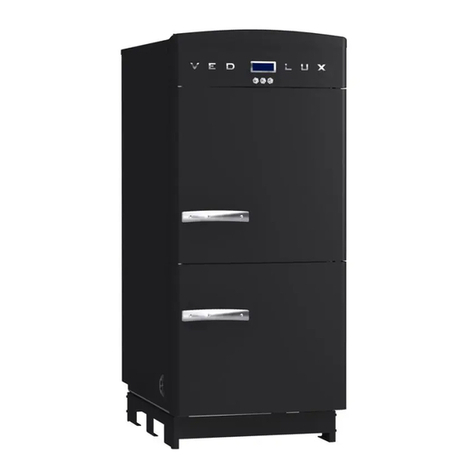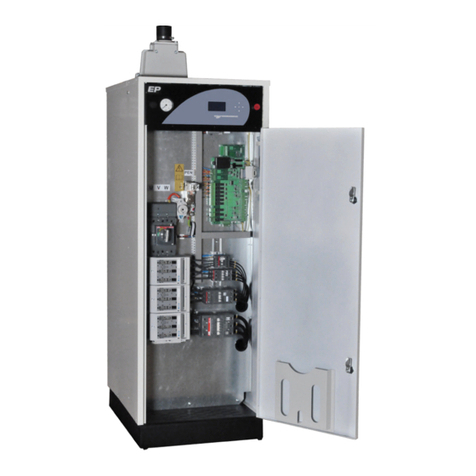
8
2008-03
Vedolux 37
Startup
1.the bypass damper must be in the closed position.
2.place kindling in the boiler, with paper if you are using it.
3. the main switch must be set to on (the green area must be
visible).
4. thermostat, FAN STOP, set to 120°C.
5.press “FAN START”, the fan starts.
6.light the boiler – gas is recommended.
First burning cycle
The rst re to be lit should be started carefully so that any re-
maining moisture in the ceramic can vaporise slowly. Lighting a
erce re may crack the ceramic Only light a small re the rst
time. Once the ceramic parts are dry, you can light a full-size
re. The ceramic does not take on moisture when the boiler is
being used.
Lighting - start
•Place kindling in the boiler, followed by crumpled newspaper.
•Press “FAN START”, the fan starts. Light the paper. Leave the
rewood hatch slightly open.
• Wait a while before closing the rewood hatch. The wood must
have properly ignited (ue gas temperature approx. 120°C).
Leave it to burn until there is a layer of vigorous embers.
Lighting a fire with the gas lighter
•Arrange medium size blocks of wood over a layer of kindling,
then ll the rest of the combustion chamber with large blocks.
• Close the rewood hatch.
•Ignite the gas lighter and insert it into the nozzle in the hole
at the top of the inner ash hatch. Move the flame from side to
side, and the wood should have ignited after about a minute.
Adding wood
When the time comes to add more wood, open the bypass
damper before the rewood hatch. This prevents smoke enter-
ing the room and the risk of flames exiting the boiler when you
add rewood.
Even out the layer of embers. Add more rewood. The amount
of rewood added depends on the
temperature in the accumulator – do
not allow the temperature to get too
high. Filling the boiler with rewood
increases the temperature of the boiler
and a 1500 litre accumulator by about
55°C. Stack the wood carefully.
Close the rewood hatch followed by
the bypass damper.
If the flue gas temperature increases,
you know that the rewood has ignited.
When the rewood has burnt and the
flue gas temperature has fallen to be-
low 120°C, the fan and charging pump
to the accumulator stop running.
RISK OF BURNS
Never open the boiler hatches if the fan is not running and
you think there might be a fire burning in the boiler.
20 22
21
25 26
27 28
20. Main switch.
21. Thermostat for fan and charging pump.
22. Fan start when the boiler is cold.
25. Overheating protection.
26. Indicator showing triggered overheating protection.
27. Thermometer, displays the boiler temperature.
28. Pressure gauge showing the water pressure in the heating system.
8
Bypass damper
The boiler's bypass damper must only be used for adding wood
during a burning cycle, in order to prevent smoke entering the
room.
When the bypass damper is open, the boiler works like an up-
draught burner with shorter flue gas paths. This increases the
ue gas temperature and reduces efciency.
Do not forget to close the damper after adding rewood.
Controlling combustion
All air passes into the boiler through the draught hatch in the
ash hatch. Combustion is controlled by the draught created by
the fan, and by the addition of oxygen in primary, secondary
and tertiary air through the inner ash hatch.
To optimise combustion and efciency, the ue gas temperature
should be 175- 200°C.
45. Hole for gas lighter.
46. Secondary damper, normally closed.
47. Tertiary damper.
The tertiary air, 47, can be adjusted so that the ame is light yel-
low.
The soot indicates the quality of combustion. If it is very dark or
black, the combustion process is not receiving enough air. In
this case, the damper should be opened more. Efcient com-
bustion gives the soot a grey-brown colour. If you are burning
wood with a moisture content of 18%, the opening should be
about 4 mm.
Inner ash hatch
The diagram below shows how to insert the inner ash hatch.
Follow the steps in reverse to remove it.
Firewood as a fuel
45
46
47
Push up Angle in Push down. The pin at the
bottom of the ash hatch
engages with the hole in
the ash plate.




